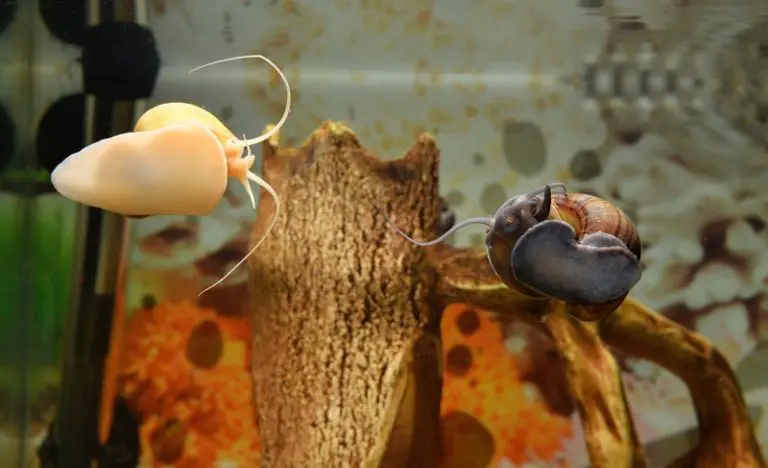Are Snails Poisonous? A Definitive Guide
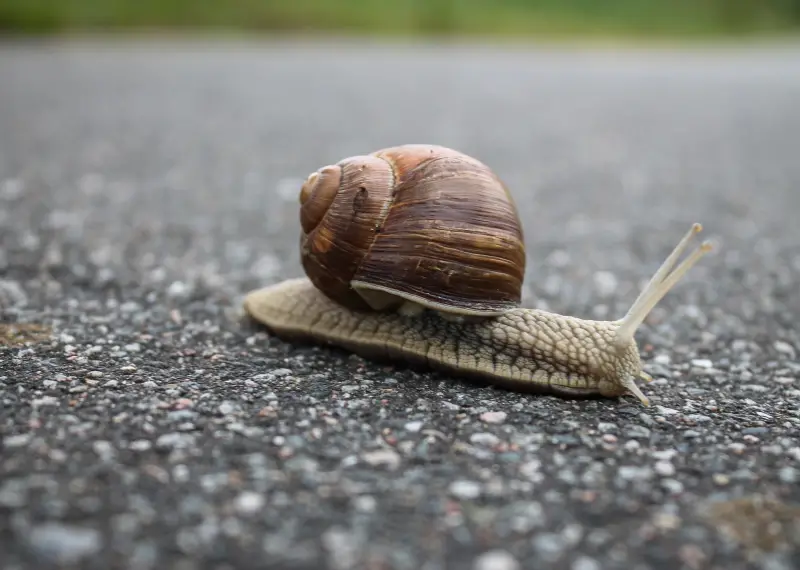
Regarding dangerous creatures in the animal kingdom, you might not immediately consider snails particularly venomous or deadly. Are Snails Poisonous? Some species of snails can indeed threaten humans and other animals due to their venomous properties. In this article, we will discuss whether snails are poisonous and delve into the types of snails that are known for their toxic capacity.

While most snail species are harmless to humans, some stand out for their venomous nature. Among these, cone snails are notorious for their highly potent venom. These sea snails inhabit tropical areas and live in shallow, warm-water coral systems. Of the more than 700 species of cone snails, a few are venomous enough to kill humans, with the geography cone being the deadliest.
As you explore the world of snails, it’s important to remember that while most snails are benign, some can pose a threat due to their poisonous venom. Gaining a better understanding of these creatures and their potential risks will help you appreciate their diversity and unique abilities while also staying safe in their presence.
Contents
Table of Contents
Understanding Snails

Diversity Among Snail Species
Snails are a diverse group of gastropod mollusks, with thousands of species living in various environments such as land, freshwater, and sea. This diverse group of creatures covers various shapes, sizes, and habitats. Some snail species, such as garden and land snails, are commonly seen in everyday life, while others, like sea and freshwater snails, can be found in aquatic ecosystems.
Each snail species has unique adaptations that allow it to thrive in its environment. When you explore the fascinating world of snails, you’ll come across many amazing and surprising characteristics these gastropod mollusks possess.
Snails and Their Environment
Depending on the species, snails can inhabit various environmental conditions. Garden snails are commonly found in damp, cool, and green environments, where they can find plenty of plants to feed on. On the other hand, land snails are more adaptable and can live in diverse terrestrial habitats.
Freshwater snails are an important part of aquatic ecosystems as both predators and prey, and they contribute by eating algae and helping to keep waterways clean. Meanwhile, sea snails live in oceans worldwide, with some species, like cone snails, being known for their venomous teeth, which are used for capturing prey.
Acknowledging that not all snail species share the same environmental preferences and behaviors is crucial. By understanding the diversity among snail species and their various adaptations to their environments, you will appreciate the uniqueness and complexity of these mollusks in their ecosystems.
Snails as Poisonous Creatures

Poisonous Vs. Venomous Snails
When discussing snails, it’s crucial to understand the distinction between poisonous and venomous. A venomous snail injects its toxins into its prey or an attacker, while a poisonous snail is harmful when ingested or touched. Generally, you should be cautious around unknown snail species, but being informed about specific poisonous or venomous snails can help you better understand potential dangers.
Cone Snails- The Deadly Snail Species
One of the most infamous venomous snails is the cone snail, a member of the family Conidae. Some of the most deadly cone snails are the Conus geographus. These snails possess a modified radula tooth and a venom gland, used for attacking and paralyzing their prey before engulfing it. The tooth, which is likened to a dart or a harpoon, is barbed and can be extended some distance out from the head of the snail at the end of the proboscis ^[1]^.
Cone snail venom contains a variety of neurotoxic peptides, making it incredibly potent and dangerous. In extreme cases, human victims of cone snail stings can experience severe pain, respiratory failure, and even death. Although fatalities are rare, there is no known antivenom for cone snail stings, so treating these creatures with caution is essential.
When encountering a snail in the wild or considering it as a pet, it’s important to be familiar with the species and know if it falls into the poisonous or venomous snail category. While not all snails pose a danger, the cone snail exemplifies how certain species can be extremely dangerous, even lethal, if handled incorrectly. Prioritizing safety and education is the key to coexisting with these fascinating creatures.
Snails and Human Interaction

Potential Threats to Humans
While most snails are harmless to humans, a few species can pose a potential threat. Some marine snails, such as the cone snail, produce venom that can cause numbness, skin irritation, paralysis, and even death in extreme cases. On the other hand, some freshwater snails can transmit parasites, leading to diseases like schistosomiasis, affecting millions worldwide.
Another potential risk comes from the presence of parasitic nematodes known as lungworms in some land snails. When accidentally ingested by humans through improperly washed food or handling contaminated snails, lungworms can cause various symptoms and complications.
Prevention and Precautions
To minimize the risk of negative interactions between humans and snails, it is essential to follow several basic precautions. These include:
- Wear protective gloves: Always wear gloves when handling snails or working in the garden where snails might be present. This will minimize the risk of direct contact with potential irritants or parasites.
- Wash your hands thoroughly: After handling snails or working in areas where they are present, make sure to wash your hands with soap and water, paying particular attention to your fingernails. This helps to eliminate any residual contaminants.
- Cook food properly: If you consume snails or other mollusks as part of your diet, always ensure they are cooked thoroughly to kill any potential parasites or pathogens that might be present.
- Wash fruits and vegetables: Carefully carefully and inspect all fruits and vegetables that may have come in contact with snails or their slime. This is particularly important for homegrown or organic produce.
- Implement pest control: Keep snail populations under control in your garden or outdoor spaces. Remove and dispose of snails properly, and consider using environmentally friendly pest control methods to minimize the risk of diseases and other issues caused by these creatures.
By following these simple steps, you can protect yourself and your family from the potential hazards of snails while promoting a healthy coexistence with these fascinating creatures in our ecosystem.
Damages and Pests
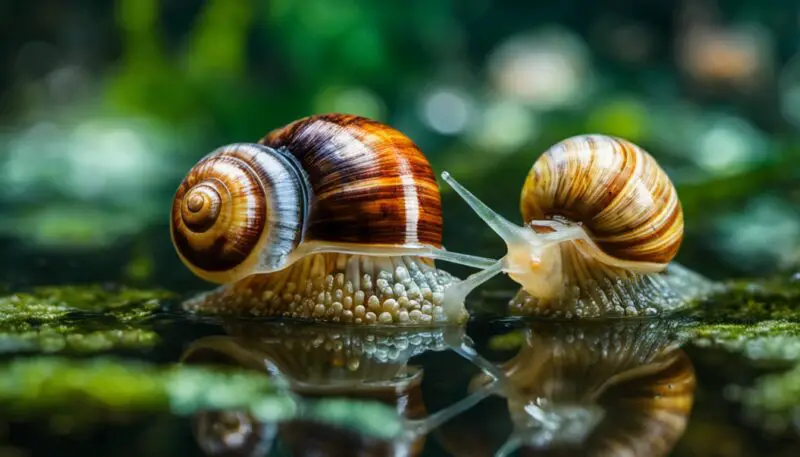
Pests in Gardens and Landscapes
Garden snails and land snails can cause considerable damage to your plants, making them unwelcome pests in gardens and landscapes. They affect various plant parts like leaves, flowers, and even fruits. As these snails feed, they create irregular holes in the foliage, leading to an unhealthy and unsightly garden.
Their preference in plants can vary, but snails often target seedlings and herbaceous plants, causing significant difficulties for gardeners. The damage done to your plants by snails can result in stunted growth, reduced yields, and plant stress, making snail control essential in maintaining a thriving garden.
Control and Management of Snail Pests
To minimise the damage caused by snails, it is crucial to implement various control and management strategies. Here are some tips to help you manage snail pests in your garden:
- Physical barriers: Create physical barriers around your garden or specific plants to prevent snails from reaching them. You can use copper tape or crushed eggshells, both of which are effective in deterring snails.
- Hand-picking: Regularly inspect your garden, particularly during damp or rainy conditions when snails are most active. Hand-pick the snails you find and dispose of them appropriately.
- Trapping: Set up traps, such as beer traps, to lure and capture snails. Check and clean these traps regularly to maintain their effectiveness.
- Biological control: Encourage natural predators, such as birds, frogs, and ground beetles, to visit your garden by providing suitable habitats for them, like bird baths and rockeries.
- Chemical control: Consider using molluscicides and snail baits carefully for severe infestations, following the label instructions and any local regulations.
Remember that it might not be possible to eradicate all snail pests from your garden, but with a combination of these strategies, you can significantly reduce their impact on your plants.
Why Snails Kill 200,000 People Every Year? Watch this
Snails and the Animal Kingdom
In the animal kingdom, you may often think of predators like sharks or other large vertebrates when considering dangerous or venomous creatures. However, some snails also possess venom and can be considered harmful.
While most snails are herbivorous, eating plants or rasping algae from surfaces with their radulae, some marine species, such as cone snails, are predatory carnivores and have evolved into fast hunters to catch their prey. Their attacks can last only milliseconds, and they often target other snails as their primary food source. Despite being venomous, the toxicity of the California cone snail, for example, is not very potent source.
Cone snails are known for their potent venom, which they use to immobilize their prey before consuming it. The venom of some species of cone snails can be harmful to humans as well, with symptoms ranging from mild pain to more severe reactions such as paralysis source.
It is crucial for you to differentiate between non-venomous and venomous snails if you come across them in your adventures through the animal kingdom. Remember that while some snails may be harmful, most snail species pose no harm to humans and are important contributors to various ecosystems, both terrestrial and aquatic. Respect their habitats, and be mindful of their capabilities if you encounter a venomous variety.
The Science of Snails

Snails are fascinating creatures, and when it comes to their venom and toxins, the science behind them becomes even more intriguing. This section will explore the research and studies conducted on snail poison, the various toxins they possess, and their potential applications.
Research and Studies on Snail Poison
Cone snails are widely recognized for their venom, which is highly potent and contains a cocktail of neurotoxic peptides known as conotoxins. According to The Atlantic, these conotoxins effectively paralyze their prey by blocking parts of their nervous systems, making them one of the world’s deadliest creatures. Cone snails use specialized harpoon-like structures to deliver their venom, inflicting a powerful sting that instantly incapacitates their prey.
Research on cone snail venom has revealed numerous types of conotoxins, each targeting specific nerve receptors and channels. In addition to their deadly power, researchers have uncovered potential medical applications for these conotoxins, such as non-addictive pain relief, as reported by Phys.org. The University of Utah has been instrumental in studying conotoxins and their therapeutic potential.
Science Friday details how cone snails are adept hunters and use specialized structures such as a muscular foot, siphon, and proboscis in their stalking and attack strategies. These adaptations enable them to locate, immobilize, and consume their prey efficiently.
As you dive deeper into the world of snail venom, it’s essential to approach the topic with caution and skepticism, ensuring that you don’t fall for exaggerated or false claims. The research on snail toxins, particularly conotoxins, presents an incredible frontier in understanding neurotoxins and their potential applications. However, always remember the importance of relying on reputable and accurate information to inform your understanding of this fascinating subject.
Medical Significance of Snail Poison

Symptoms and Treatment
Snail poison, specifically from cone snails, can cause severe symptoms such as paralysis and even death. Their venom contains conotoxins, highly potent neurotoxic peptides that paralyze their prey by blocking parts of their nervous system.
If you get stung by a cone snail, you may experience pain, numbness, and difficulty breathing. Immediate medical attention is vital to avoid life-threatening complications. Treatment usually includes pain management and close monitoring, as there is no specific antivenom for cone snail stings.
Aside from cone snails, certain land snails can carry a parasitic nematode called lungworm, which can cause serious illness in humans if ingested. Infections with lungworm can manifest with symptoms such as cough, fatigue, and neurological issues. Treatment typically involves the drug praziquantel to kill the parasite and relieve symptoms2.
Snail-Borne Diseases
Snails can also transmit other diseases, such as schistosomiasis, a parasitic infection caused by flatworms living in freshwater snails3. Disease ecologists have identified three main species of schistosomes that can infect humans. The symptoms of schistosomiasis vary depending on the infection’s severity and can range from anemia and fatigue to chronic cases with severe liver and intestinal damage. Treatment usually involves antiparasitic drugs, often the same praziquantel used for lungworm infections.
In conclusion, not all snails are poisonous, but certain species significantly threaten human health. Taking preventive measures, such as avoiding contact with snails and consuming properly cooked food, can help protect you from these dangerous creatures.
FAQs: Are Snails Poisonous
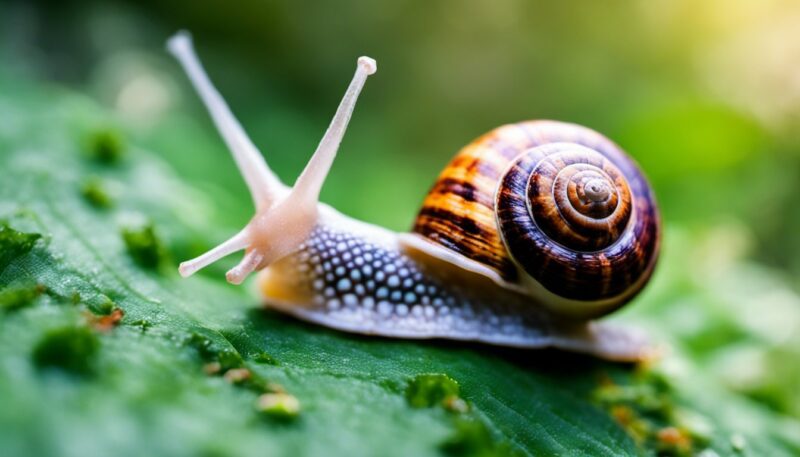
How can you identify a poisonous snail?
You should look for specific characteristics such as distinct shell patterns or colors to identify a poisonous snail. One example of a venomous snail is the cone snail, which has a cone-shaped shell and brightly colored patterns. Remember that not all snails are poisonous, and most garden snails are harmless to humans.
Are snails harmful to pets and children?
While most common garden snails are not harmful to pets and children, it is always better to be cautious. Pets, especially dogs, might be attracted to the snails and accidentally ingest them, causing digestive issues. Young children may also be curious about snails but should be discouraged from handling them to avoid potential sanitary concerns or ingestion.
Which types of snails are toxic?
The most notably toxic species of snails are cone snails, found in marine environments. They possess venom that can be harmful to humans, and some can even be deadly. However, these snails are not typically found in gardens and are not a concern for most people dealing with common garden snails.
Where are venomous snails commonly found?
Venomous snails, such as cone snails, are primarily found in tropical marine environments like coral reefs. They are not naturally found in homes, gardens, or other urban areas. As a result, the likelihood of encountering a venomous snail outside of its natural habitat is extremely low.
What are the effects of snail venom?
The effects of snail venom can vary depending on the species and the potency of the venom. In the case of cone snail venom, it can cause symptoms such as pain, numbness, respiratory distress, and in severe cases, paralysis or death. Immediate medical attention is necessary if you suspect that you have been exposed to venom from a cone snail or other dangerous species.
How do poisonous snails release their toxins?
Poisonous snails, like cone snails, typically release their toxins through specialized harpoon-like teeth called radulae. When they encounter prey or feel threatened, they will fire the radula, which is loaded with venom, into their target. This process is known as the “taser and tether” method, as described by The Atlantic.


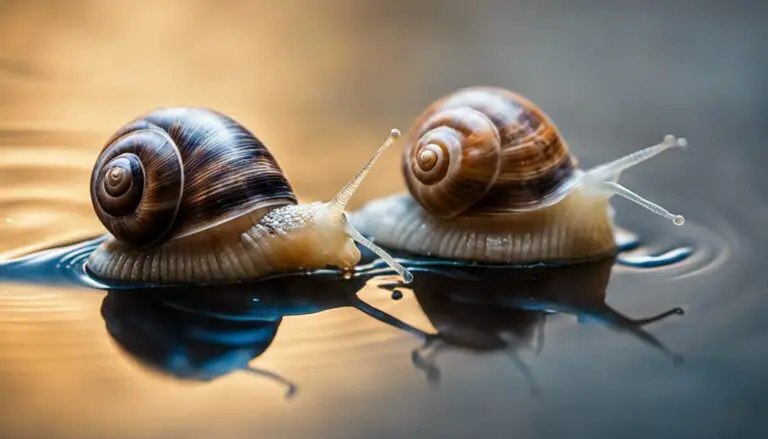
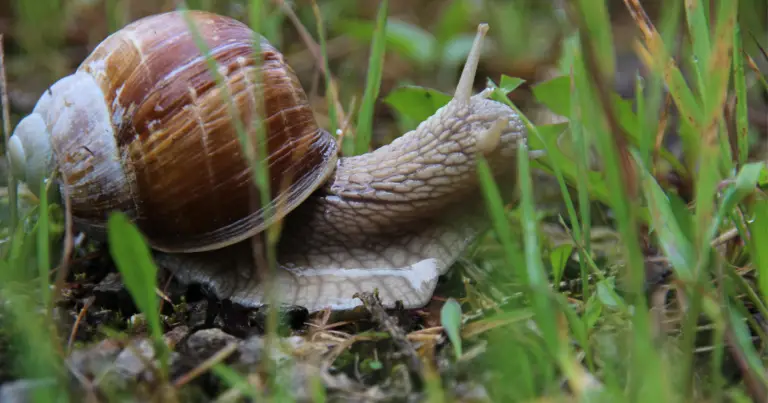
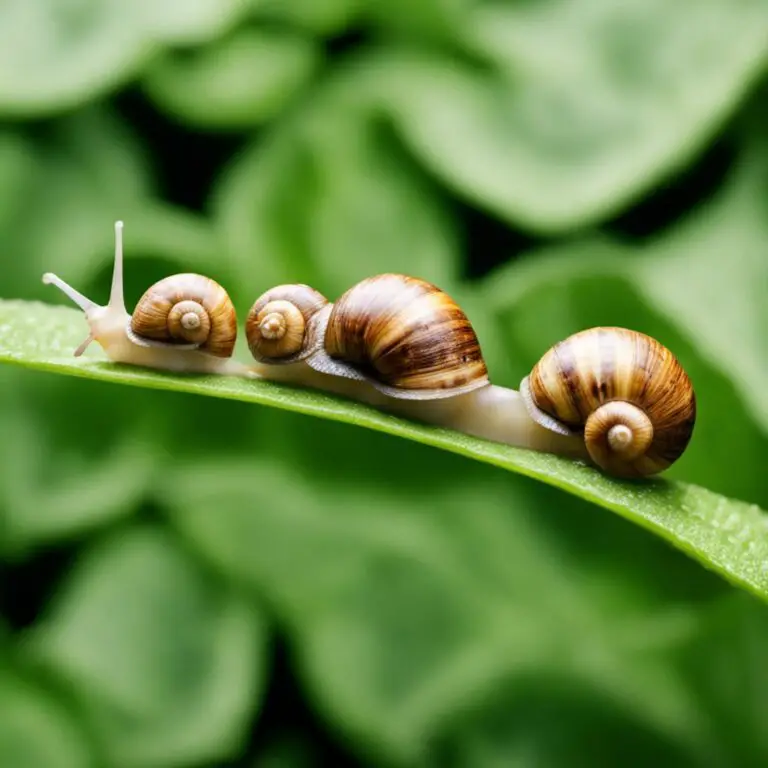
![Do Snails Need Water? [Complete Guide]](https://allourcreatures.com/wp-content/uploads/2021/11/do-snails-need-water-768x513.jpg)
